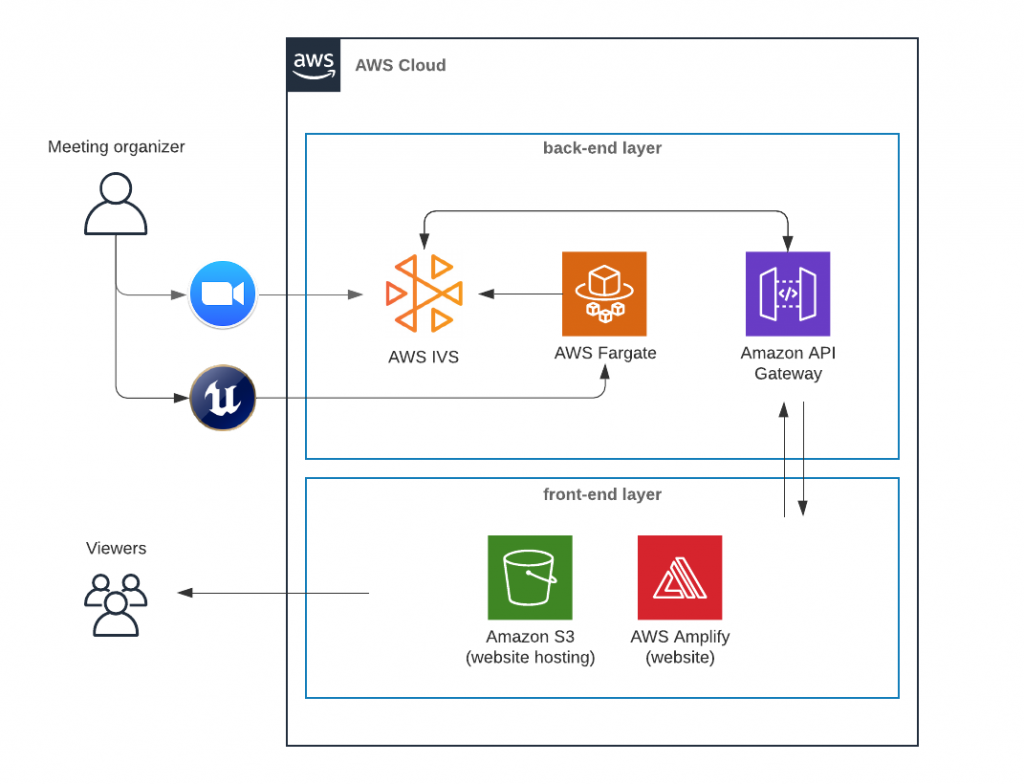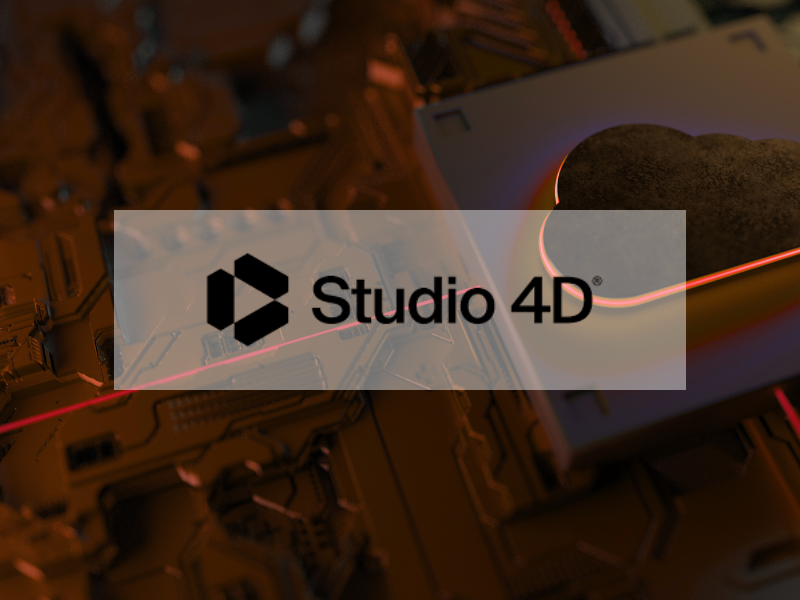Studio 4D is a digital visualization firm providing virtual 3D environments for all size architectural projects – from individual buildings to full city planning. The firm’s goal is to help owners, developers, and future inhabitants really ‘feel’ what it’s like to experience a project before and during its development.
Contents
The Need For A Solution That Provides an Interactive Video Experience to Large Audiences
The Studio 4D team needed a solution to provide a cloud-based virtual walkthrough experience for large audiences (500+) for its interactive demos of architectural environments created and pixel-streamed via Unreal Engine, an advanced real-time 3D creation platform that Studio 4D leverages to build its virtual environments.
The pixel-streaming protocol used by Unreal Engine – WebRTC – is an excellent choice for interactive sessions, and Studio 4D wanted to see if there was a way to maximize it to benefit the great quantity of observers attending their streaming platform. Studio 4D looked for a solution and reached out to Amazon Web Services (AWS).
The Amazon Web Services (AWS) sales team searched internally for a partner with the right expertise to implement video workloads, and if possible one with an early understanding of a new streaming solution being introduced, Amazon Interactive Video Service (IVS). The media team at AWS recommended TrackIt to the AWS sales team and introductions were made by all parties.
The TrackIt and Studio 4D teams determined that Amazon IVS was indeed the best fit for the requirements as a backend streaming service.
The choice for a front-end interface to Unreal Engine was still an open question. TrackIt and Studio 4D decided that a two-track approach presenting distinct options made sense to pursue:
1. Utilizing Zoom as the front-end interface and its ability to output RTMP (IVS’ native video input protocol)
♦ Using Zoom has several benefits; it’s very easy to use and well understood and no extra infrastructure is required to run it.
♦ Zoom does however have some performance implications. It is limited to a 720p output resolution, and in practice, TrackIt found that actual streaming performance was limited to the 15 frames per second range.
2. Implement an Amazon Elastic Compute Cloud (Amazon EC2) Docker instance using FFmpeg to translate WebRTC to RTMP directly from Unreal Engine itself to serve as the front-end platform.
♦ The benefits of using a direct Unreal Engine connection are Studio 4D’s familiarity with its use and output at a full 1080p (or greater) at up to 60 frames per second.
♦ Challenges for this approach are the extra resources required (AWS Fargate) and some additional complexity to managing the presentations – which Studio 4D and TrackIt addressed with some custom front-end GUI development.

Implementation of Unreal Engine To IVS Process & Challenges
The development of a Zoom integration with Amazon IVS was a fairly straightforward task; implementing an API connection to Zoom’s RTMP output and piping it into IVS for streaming to observers. The best location to run Zoom was determined to be inside an AWS Workspaces instance rather than on a local machine; it made for a more automated experience and somewhat reduced overall latency and improved the video performance.
For the direct Unreal Engine to IVS solution, TrackIt built an easy-to-use tool for Studio 4D, creating a React application that provides the presenter with a simple web interface to create and manage their IVS streams.
The TrackIt team needed to find a means to ‘convert’ the stream coming from Unreal Engine which uses WebRTC, a modern protocol that provides a video out capability, whereas Amazon IVS only supports/accepts RTMP for live streaming. To address this challenge, the TrackIt team configured a Docker container running on AWS Fargate that connects to the live stream from Unreal Engine and uses FFmpeg to broadcast the real-time audio and video of the stream in high-definition to the Amazon AWS IVS RTMP endpoint.
TrackIt’s Expertise
TrackIt’s work with Studio 4D highlights the TrackIt team’s expertise in implementing online streaming solutions that leverage the AWS cloud and also in creating web applications tailored to a company’s needs. The Studio 4D team was very pleased with the knowledge and expertise provided by the engineers at TrackIt. The company is currently in the process of deploying the online-streaming platform and expects this newly-implemented solution to exponentially increase the number of people with whom it can share real-time 3D experiences online.
“Three things stood out to us: For starters, the fact that the TrackIt team showed a background of global collaboration. We had meetings where there were people in the US and in France. Second, TrackIt was recommended by AWS itself to be able to help us implement this solution faster. That really gave us the confidence to leverage their expertise. Third, during the implementation, we went back and forth and discussed complex issues. It was nice to have someone that could understand our concerns and answer the questions we had.”
– Hilario Canessa, CEO, Studio 4D
Q. Would you Recommend TrackIt to other companies looking to implement similar solutions? Why?
A. Implementing an online streaming solution is not easy. It’s a problem that looks complex and IS complex. It was really important for us to have someone like the TrackIt team to help us onboard the online streaming platform onto our existing solution. I think companies in similar situations should definitely look to take that first step and talk to a company like TrackIt that has the experience and expertise required to implement such solutions.
– Hilario Canessa, CEO, Studio 4D
Studio 4D’s Challenge:
The need for a solution that helps provide low-latency real-time 3D interactive experiences to large audiences
Solution:
Amazon IVS (Interactive Video Service)
Outcomes:
Online streaming platform implemented enabling the company to provide real-time interactive 3D experiences to large audiences
About TrackIt
TrackIt is an international AWS cloud consulting, systems integration, and software development firm headquartered in Marina del Rey, CA.
We have built our reputation on helping media companies architect and implement cost-effective, reliable, and scalable Media & Entertainment workflows in the cloud. These include streaming and on-demand video solutions, media asset management, and archiving, incorporating the latest AI technology to build bespoke media solutions tailored to customer requirements.
Cloud-native software development is at the foundation of what we do. We specialize in Application Modernization, Containerization, Infrastructure as Code and event-driven serverless architectures by leveraging the latest AWS services. Along with our Managed Services offerings which provide 24/7 cloud infrastructure maintenance and support, we are able to provide complete solutions for the media industry.


